John Glenn
First American To Orbit The Earth
Dies At 95


First American To Orbit The Earth
Dies At 95

Astronaut John H. Glenn, Jr. became the first American to orbit the Earth on February 20, 1962. With the world watching the historic and live-televised event, Glenn orbited the Earth three times in his space capsule, Friendship 7. Four hours and 55 minutes after ignition, John Glenn and Friendship 7 returned to Earth and splashed down in the Atlantic Ocean.

John Herschel Glenn Jr. (July 18, 1921 – December 8, 2016) was an American aviator, engineer, astronaut, and United States Senator from Ohio. In 1962 he became the first American to orbit the Earth, circling three times. Before joining NASA, he was a distinguished fighter pilot in both World War II and Korea, with six Distinguished Flying Crosses and eighteen clusters to the Air Medal.
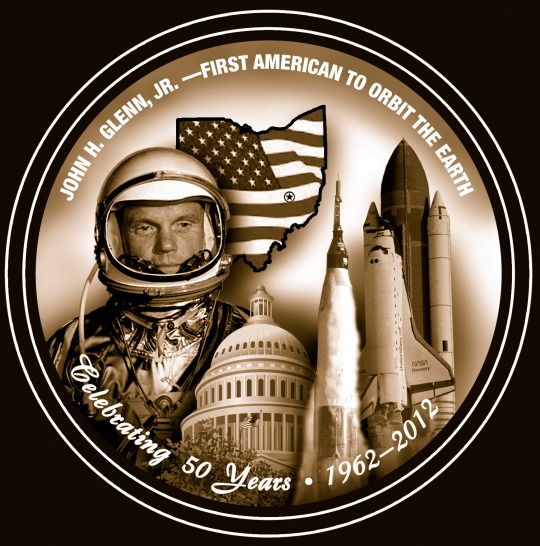
Glenn was one of the "Mercury Seven" group of military test pilots selected in 1959 by NASA to become America's first astronauts. On February 20, 1962, he flew the Friendship 7 mission and became the first American to orbit the Earth and the fifth person in space. Glenn received the Congressional Space Medal of Honor in 1978, was inducted into the U.S. Astronaut Hall of Fame in 1990, and was the last surviving member of the Mercury Seven. He also received the NASA Distinguished Service Medal.
After he resigned from NASA in 1964, and retired from the Marine Corps in 1965, Glenn planned to run for a U.S. Senate seat from Ohio. A member of the Democratic Party, he first won election to the Senate in 1974 where he served through January 3, 1999.
In 1998, while still a sitting senator, he became the oldest person to fly in space, and the only one to fly in both the Mercury and Space Shuttle programs as crew member of the Discovery space shuttle. He was also awarded the Presidential Medal of Freedom in 2012.
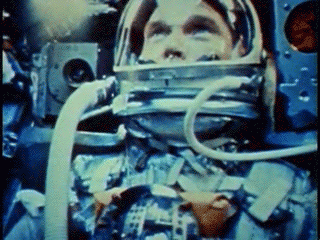
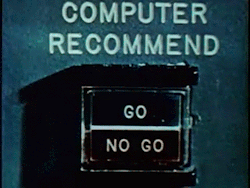
Glenn made history a second time in 1998, when he flew aboard the shuttle Discovery to become the oldest person to fly in space.
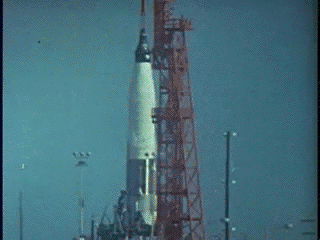
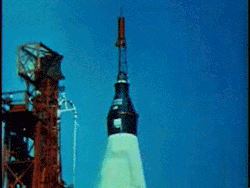
Glenn was 95 when he died; he had been hospitalized in an Ohio State University medical center in Columbus since last week.
John Glenn stands beside a Mercury capsule during training at Cape Canaveral, Fla., in 1962.
Glenn had been battling health issues since a stroke a few years ago. His death Thursday was confirmed by Hank Wilson, communications director of the John Glenn College of Public Affairs at the Ohio State University.
President Obama said that Glenn's trailblazing showed "with courage and a spirit of discovery there's no limit to the heights we can reach together." The president said, "John always had the right stuff, inspiring generations of scientists, engineers and astronauts. ... On behalf of a grateful nation, Godspeed, John Glenn."
NASA Administrator Charles Bolden said, "Senator Glenn's legacy is one of risk and accomplishment, of history created and duty to country carried out under great pressure with the whole world watching. The entire NASA Family will be forever grateful for his outstanding service, commitment and friendship."
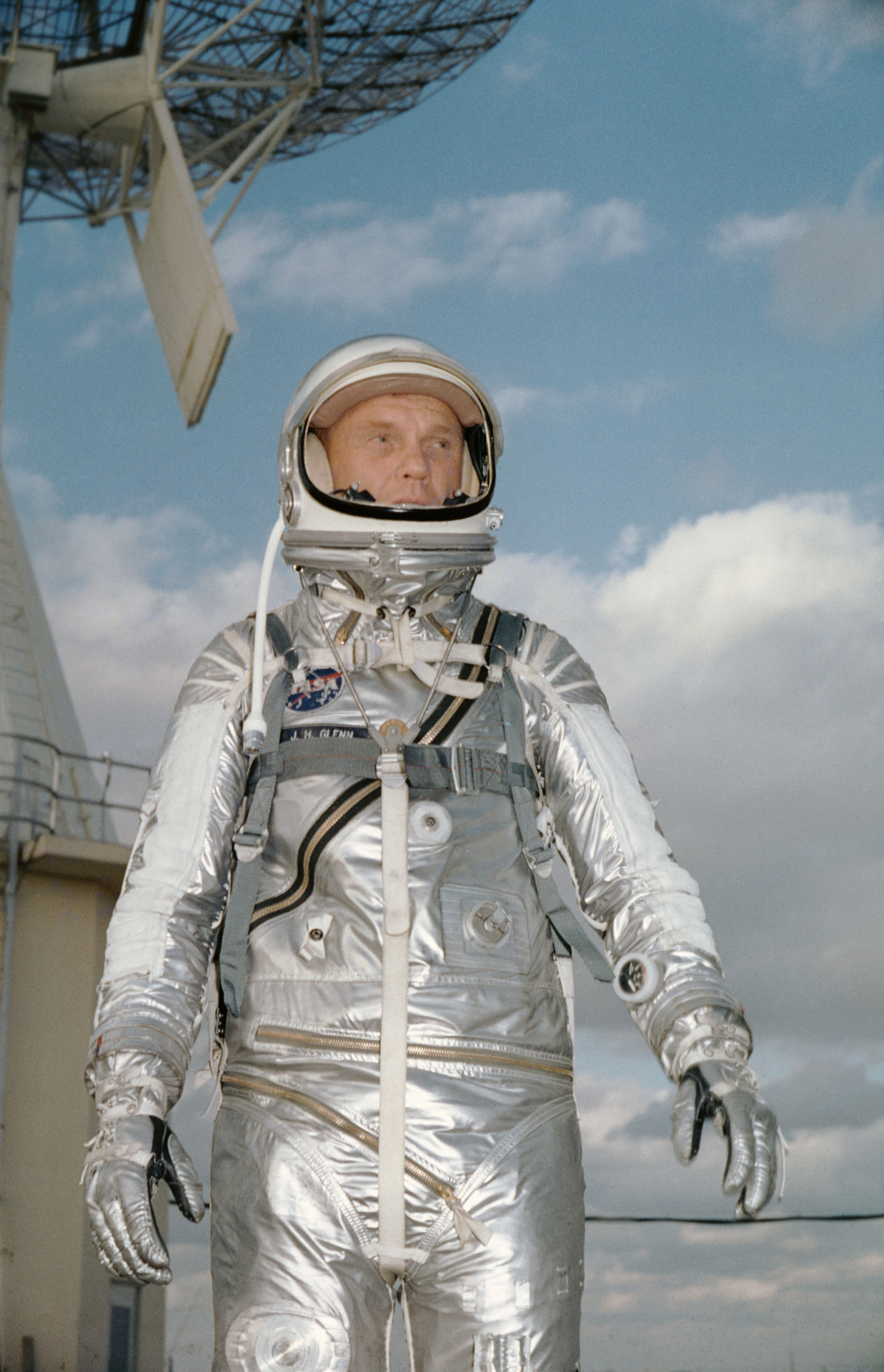
An early explorer
On Feb. 20, 1962, when John Glenn rocketed into space, it was momentous and nerve-wracking. Space travel was in its infancy. Every launch and mission captivated the imagination of America.
A few minutes after liftoff, Glenn's Friendship 7 capsule reached orbit. People listened in with excitement and awe.
"Roger, zero G and I feel fine," Glenn relayed from space. "Capsule is turning around. Oh, that view is tremendous!"
So much about space in those days was unknown. Scientists designed experiments to study whether astronauts could eat or drink in space. Doctors were concerned that human eyes would change shape, making it hard to operate during re-entry.
Then there was the technology. Rockets exploded during testing, sometimes with the astronauts watching. In 2012, on the 50th anniversary of his Mercury flight, Glenn reflected on the danger.
"It was important because of the Cold War," Glenn said at a Smithsonian forum. "It was a new step forward, and we were proud to be representing our country there. And so ... you made it as safe as you possibly could, and what little bit of risk was left, we accepted that."
Any trip to space is risky, and Glenn's mission was no exception. During his five hour, three-orbit flight, there were some tense moments after faulty warnings about his heat shield. At a post-flight news conference, Glenn was characteristically cool. "So there were some moments of doubt there as to whether the heat shield had been damaged and whether it might be tearing up itself. And this ... this could have been a bad day all the way around if this had been the case."
After the flight, he became a national hero. He befriended President John F. Kennedy and received a ticker-tape parade in New York City.
"I think John Glenn will be remembered as an actual hero at a time when heroes are often called heroes but are not," says Francis French, the author of many books on the space program's early days.
French says Glenn was basically an all-American boy with a photogenic smile and a quick wit.
"I think John Glenn is one of those people that's going to stay in the history books," he says. "And even the most cynical of history readers is going to go, 'This guy actually is what everybody says he was.' "
French says Glenn was "exactly at the right place at the right time for when America needed somebody to not only become the first American to orbit the Earth but to actually project what it meant for America to put a person into space."


No comments:
Post a Comment